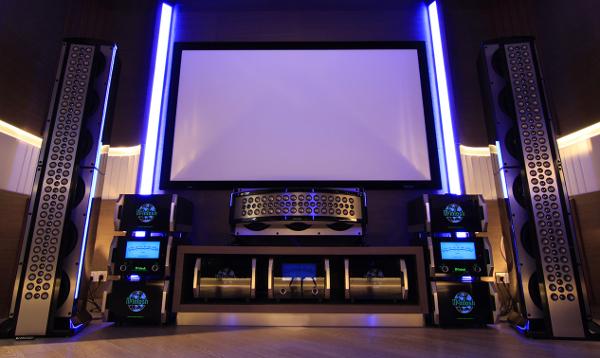I have been into audio for a brief period (4 years) but have never heard the concept of "Line source". I bought Tekton Design Double impact and I surmise that those speakers are considered a hybrid (line source and point source) because of their array of tweeters--correct me if I am wrong. I am not technically inclined but assume that the multiple drivers and good crossovers permit the tweeter arrays to be cleaner, less strained, etc. Is this a benefit of many of the Line-source speakers? I realize that the comparison is apples vs oranges because all the line-source speakers happen to be very expensive so the comparison would be against equally expensive point-source, but is my assumption true that line-source may profit from its design vs the point-source?
What Are the Benefits of Line-Source Speakers?

Q I am building a dedicated 15 x 10 x 28-foot (WxHxD) home theater with two rows of seating and a bar for the third row. I plan to buy new speakers and am interested in the advantages, if any, of line-source over regular point-source designs. I’ve heard that line-source speakers create a larger stereo sweet spot. Is that the case? —Lorne Charles / via e-mail
A Line-source speakers are usually tall designs — a typical model may stand as high as 8 feet — that generally employ multiple identical drivers in a vertically stacked configuration. A rare few utilize long, thin planar magnet diaphragms and ribbon drivers. Most line-source speakers from companies like McIntosh, Genesis, and the Bob Carver Corporation are freestanding tower models, though there are also in-wall versions available from outfits including Steinway Lyngdorf and Wisdom Audio. While these all tend to be pricey, high-end offerings, Sound & Vision recently reviewed a rare, affordable variant of a line-source speaker, the Dayton Audio Epique CBT24 ($1,995 per pair list, $1,495 promo pricing on Parts-Express.com).
The most often-stated benefit to line-source designs is that they minimize the effect of the listening room by restricting vertical dispersion — the sound isn’t affected by the same floor-bounce and ceiling-reflection issues that plague regular two-way or three-way “point-source” speakers. They can also provide sound with consistent timbre and volume over long distances, which is why line-source designs are regularly used for sound reinforcement in concert halls and in stadium PA systems. For that reason alone, they might be a good option for a large, multi-row home theater such as the one you’re building.
My personal experience with line-source speakers has mostly been with huge, high-end towers in stereo, as opposed to home theater, systems. A large sweet spot was a factor in those listening sessions, and I also recall experiencing an extremely wide, seemingly endless stereo image.
- Log in or register to post comments


If Mr. Lorne Charles is "building" a dedicated HT room himself (DIY), then is a risky business to spend the kind of dollars line source speakers cost.
Line Source speakers have been traditionally used in large open rooms, such as a living/listening room. The main advantage is the wide disbursement of the sound waves for a wide sound stage imaging.
For Stereo music listening in a large room such speakers can work well, its quite iffy for a closed Home Theater room.
I suggest Mr. Charles either hire an installer, experienced with line source speakers (probably in wall Wisdom Audio), or set up a 9.2 traditional three way speakers system(Height speakers for Atmos).
There are many three way speaker Home Theater systems that would fill the size room Mr. Charles is building. Its a much safer option, specially for us regular hands on DIY guys.

Line source are for Hobbyist tinkering..
For a Home Theater just buy regular type but more expensive speakers..
Names like Definitive Technology,JBL and Focal come to mind..

You are so right!!!! I remember hearing the Scanea's for the first time at Axpona 2012!!! Those speakers gave me precise imaging regardless of where I sat! It was like everywhere was the sweet spot! I enjoyed that room much more than I did the highly praised MBL room.
I also heard the Carver's make their debut at the very same show. Bob was still trying to voice them - I passed him in the hallway and didn't say a word to him. He looked tired and was pouring with sweat. I talked to his partner at the time and he invited me back the next day for another listen. The Carvers had settled in and yep - big huge soundstage! These speakers were great as well (not yet Scanea great mind you) but they were great on their own!!!!


I decided to go with the Steinway-Lyngdorf In-wall line source system. I do have an integrator and a room engineering team so I wasn't taking a DIY approach. I am aware of the line source advantages such as power over distance performance and reduced ceiling and floor reflections..My real question really is the imaging accuracy or capability of line arrays vs. conventional D'apollito designs for LCR in a home theater.

























































